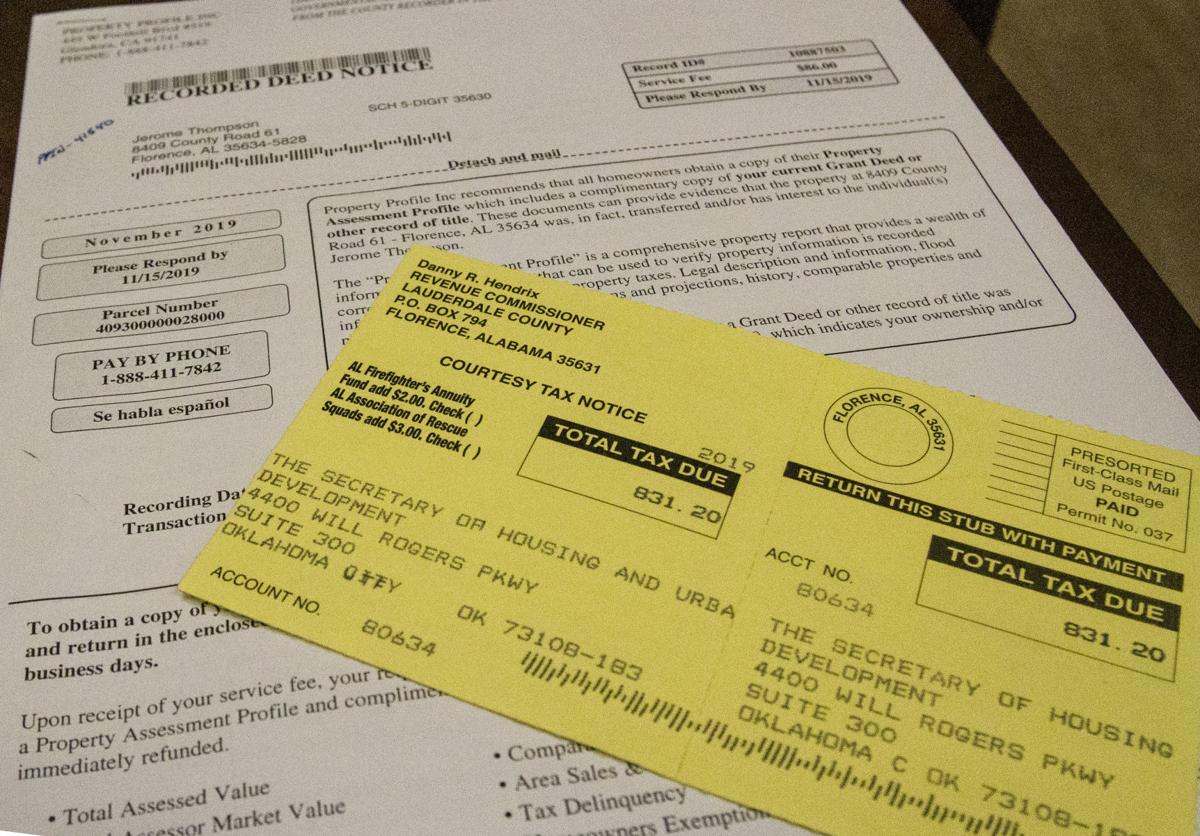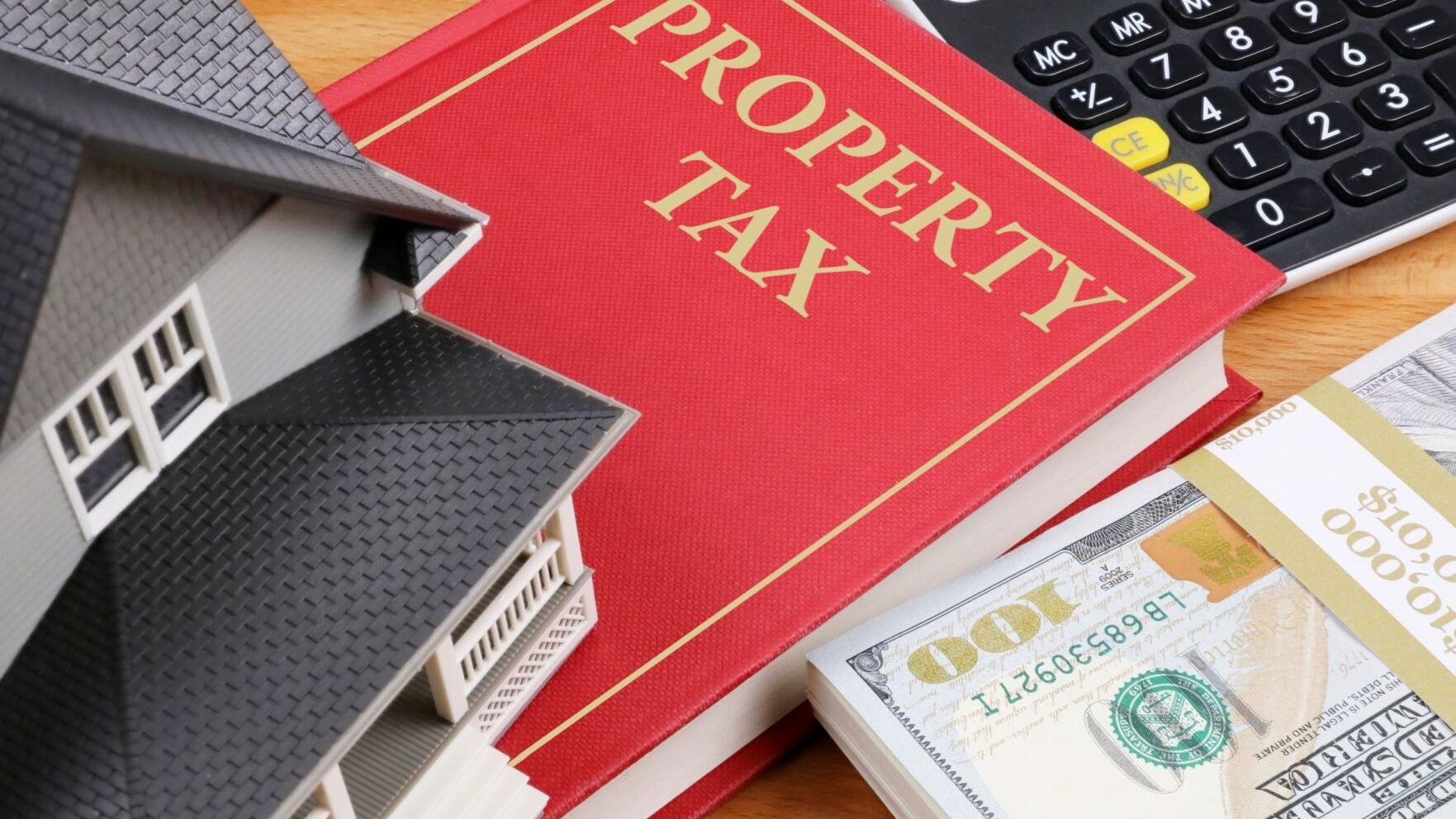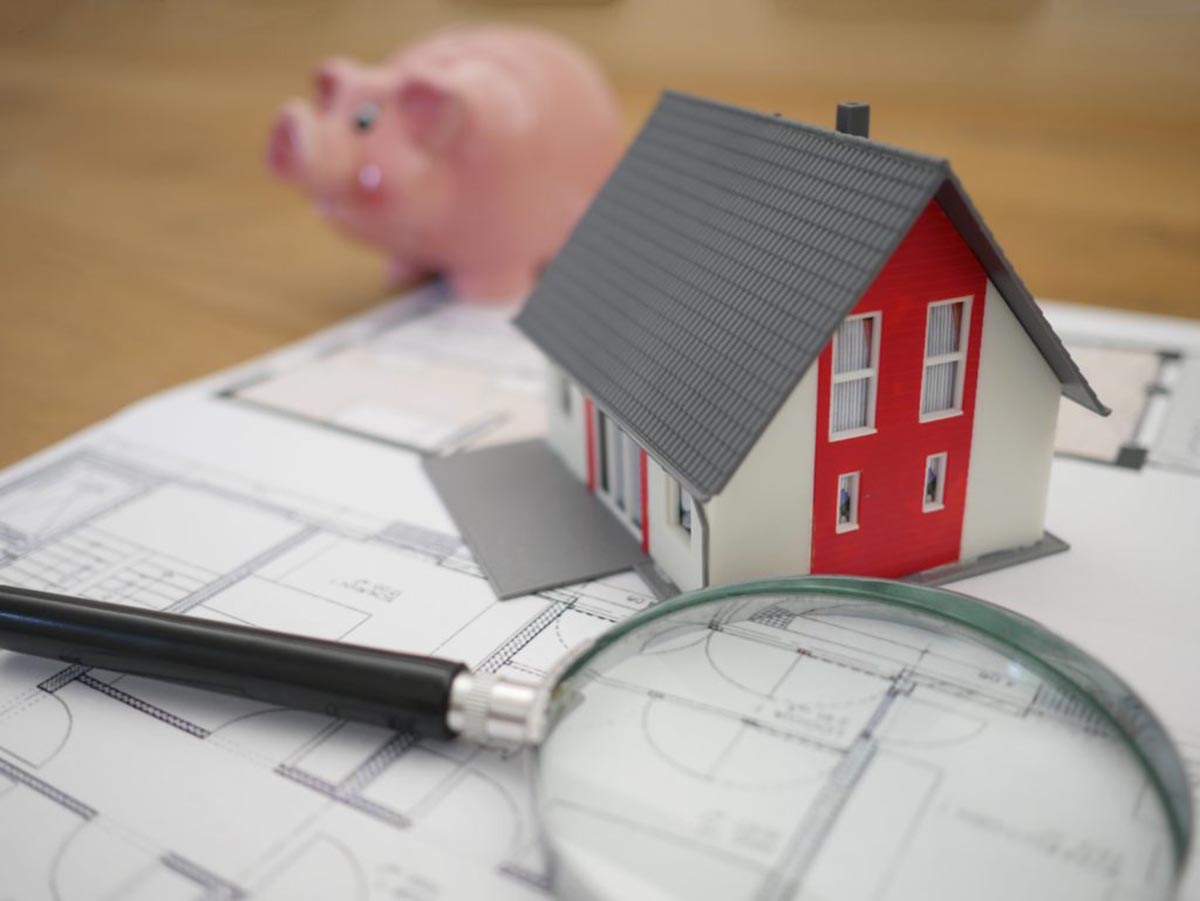Home>Home Maintenance>Understanding Property Assessment By A Management Company In A Golf Community


Home Maintenance
Understanding Property Assessment By A Management Company In A Golf Community
Modified: March 6, 2024
Learn how a management company in a golf community assesses properties and maintains homes. Discover the importance of home maintenance for a seamless living experience.
(Many of the links in this article redirect to a specific reviewed product. Your purchase of these products through affiliate links helps to generate commission for Storables.com, at no extra cost. Learn more)
Introduction
Welcome to the world of golf communities, where lush greens, stunning fairways, and an active lifestyle await. Living in a golf community offers a unique experience, combining the serenity of nature with the thrill of the sport. However, maintaining and managing a golf community requires careful planning and a dedicated management team.
One crucial aspect of managing a golf community is property assessments. Whether you are a homeowner or a prospective buyer, understanding property assessments is essential to ensuring the continued success and value of the community.
In this article, we will dive into the world of property assessments in a golf community, exploring their importance, the role of management companies, the factors considered, the assessment process, and the benefits they bring. So, grab your golf clubs, and let’s tee off into the world of property assessments!
Key Takeaways:
- Property assessments in a golf community ensure that everyone pays their fair share for maintaining amenities like golf courses and swimming pools, preserving property values and enhancing the overall living experience.
- The management company plays a crucial role in conducting fair and transparent property assessments, ensuring that homeowners contribute to the community’s upkeep and development while maintaining equity and transparency.
Read more: How To Manage A Construction Company
What is a Property Assessment?
A property assessment is a process conducted by a management company in a golf community to determine the value of each property within the community. It involves evaluating various factors, such as the location, size, amenities, and condition of the properties, in order to determine fair and accurate values.
Property assessments are crucial in maintaining equity among the homeowners in a golf community. By assessing the value of each property, the management company ensures that homeowners are contributing their fair share towards the upkeep and improvement of the community.
Property assessments are typically conducted on an annual basis, although the frequency may vary depending on the specific community. They play a vital role in determining the amount of dues or fees that homeowners must pay to support the maintenance and management of the golf community.
It’s important to note that property assessments are not the same as property taxes. While property taxes are determined by local government entities and are used to fund various public services and infrastructure, property assessments are specific to the management and maintenance of the golf community itself.
By conducting property assessments, the management company can ensure that the financial burden is distributed fairly among the homeowners, taking into account the value and amenities provided by each property within the community.
Importance of Property Assessments in a Golf Community
Property assessments play a vital role in maintaining the value, quality, and overall success of a golf community. Here are some key reasons why property assessments are important:
- Equitable Distribution of Costs: Golf communities often include shared amenities, such as golf courses, swimming pools, fitness centers, and maintenance services. Property assessments ensure that homeowners contribute their fair share towards the upkeep and improvement of these communal facilities. This helps prevent any inequity in the distribution of costs, ensuring that everyone benefits from the amenities provided.
- Preservation of Property Values: A well-maintained golf community with high-quality amenities and services tends to hold its value better over time. Property assessments enable the management company to allocate funds towards the maintenance and enhancement of the community’s assets. This helps preserve property values, making it an attractive investment for homeowners and prospective buyers alike.
- Continued Community Development: Property assessments generate the necessary funds to support ongoing community development initiatives. Whether it’s the construction of new facilities, landscaping improvements, or infrastructure upgrades, property assessments provide the financial resources needed to enhance and expand the offerings of the golf community.
- Shared Responsibility for Maintenance: Golf communities often require regular maintenance to keep the grounds pristine, ensuring an enjoyable experience for all residents. Property assessments contribute to the maintenance budget, allowing the management company to hire skilled personnel, maintain landscaping, conduct repairs, and implement necessary improvements throughout the community.
- Enhancement of Community Services: Property assessments not only cover the cost of maintenance but also enable the management company to provide additional services for the benefit of homeowners. This can include security services, landscaping enhancements, organized social events, and other amenities that enhance the overall lifestyle within the golf community.
Overall, property assessments ensure that the financial resources are available to maintain and enhance the golf community, making it an attractive and valuable place to live. By spreading the costs fairly among homeowners and investing in the upkeep and development of the community, property assessments contribute to the long-term success and desirability of the golf community.
Role of a Management Company in Property Assessments
In a golf community, the management company plays a crucial role in conducting property assessments. They are responsible for overseeing the assessment process and ensuring it is carried out accurately and fairly. Here are the key roles and responsibilities of a management company in property assessments:
- Data Collection and Analysis: The management company collects relevant data on each property within the golf community. This includes property size, location, amenities, and other factors that influence the property’s value. They then analyze this data to determine the appropriate assessment value for each property.
- Assessment Methodology: The management company develops and implements a methodology for property assessments. This includes determining the appropriate valuation approach, such as a market-based approach or an income-based approach, depending on the specific circumstances of the community.
- Collaboration with Appraisers: In some cases, the management company may collaborate with professional appraisers to ensure an accurate assessment of property values. Appraisers bring their expertise and knowledge of the local real estate market to provide an unbiased evaluation of each property.
- Communication with Homeowners: The management company communicates the assessment process and outcomes to homeowners within the golf community. They provide transparency and clarity regarding how the assessment values are determined and the rationale behind them. This helps build trust and understanding among homeowners.
- Review and Appeals Process: The management company establishes a review and appeals process for homeowners who may have concerns or disputes regarding their property assessments. This provides a mechanism for homeowners to voice their opinions and seek resolution if they believe their assessment values are not accurate.
- Budget Allocation: Once the property assessments are complete, the management company uses the assessment values to allocate the budget for the golf community. This includes determining the amount of fees or dues that homeowners need to contribute to support the maintenance and management of the community.
- Documentation and Record-Keeping: The management company maintains accurate documentation and records of the property assessments. This includes keeping records of the assessment values, any changes or updates made, and the decision-making process involved. These records are essential for future reference and transparency.
The role of a management company in property assessments is crucial in ensuring fairness, accuracy, and transparency throughout the process. Their expertise and dedication contribute to the overall success of the golf community and the equitable distribution of costs among homeowners.
Factors Considered in Property Assessments
Property assessments in a golf community involve the evaluation of various factors to determine the value of each property. These factors may vary depending on the specific community, but here are some common considerations:
- Location: The location of a property within the golf community is a significant factor in its assessment. Properties with desirable locations, such as those overlooking the golf course or situated near amenities, tend to have higher values. On the other hand, properties located farther away from amenities or with less desirable surroundings may have lower assessment values.
- Property Size and Layout: The size and layout of a property play a crucial role in its assessment. Larger properties generally have higher values, as they offer more space and potential for customization. The layout of the property, including the number of bedrooms, bathrooms, and any additional features like a private pool or outdoor living space, can also impact its assessment value.
- Amenities and Facilities: The amenities and facilities provided within the golf community greatly influence the assessment values. Properties located near or offering direct access to amenities like the golf course, clubhouse, swimming pools, fitness centers, and tennis courts tend to have higher values. The quality and maintenance of these amenities also contribute to the assessment process.
- Condition and Upgrades: The condition of a property, including its age, maintenance, and any upgrades or renovations, is an essential consideration in property assessments. Well-maintained properties with modern features and recent upgrades usually have higher values. On the other hand, properties in need of repair or outdated fixtures may have lower assessment values.
- Market Trends: The current market conditions and trends in the real estate industry can impact property assessments. The management company takes into account factors like supply and demand, comparable sales in the area, and market fluctuations when assessing the value of each property. This helps ensure that the assessments align with the current market value.
- Community Restrictions: Some golf communities have specific rules and restrictions that can influence property assessments. For example, restrictions on property use, architectural guidelines, and landscaping requirements may impact the assessment values. The management company considers these community restrictions when determining the assessment values for each property.
- Environmental Factors: Environmental factors, such as views, proximity to natural features, and potential hazards, can affect property assessments. Properties with scenic views or close proximity to natural attractions often have higher values. Conversely, properties near noisy roads or potential hazards like flood zones may have lower assessment values.
These are just a few of the factors considered in property assessments. It is important to understand that each golf community may have its own unique set of considerations based on the specific characteristics and amenities it offers. The management company carefully evaluates these factors to ensure accurate and fair assessments for each property within the community.
Read more: What Is Property Assessment
The Process of Property Assessments in a Golf Community
The process of property assessments in a golf community involves several steps to accurately determine the value of each property. While the specific details may vary depending on the community and management company, here is a general overview of the assessment process:
- Data Collection: The management company begins by collecting relevant data on each property within the golf community. This includes information on property size, location, amenities, condition, and any recent upgrades or renovations. They also gather data on market trends, comparable sales, and any community-specific factors that affect property values.
- Analysis and Evaluation: With the collected data, the management company analyzes and evaluates the properties’ values. They consider factors such as location, amenities, size, condition, market trends, and any community restrictions or environmental factors. This analysis helps determine the appropriate assessment values for each property within the golf community.
- Review and Verification: The assessment values are subjected to a review and verification process. The management company ensures that the assessments align with the established criteria and methodology. This step helps maintain accuracy and consistency in the assessment process.
- Communication with Homeowners: Once the assessment values are finalized, the management company communicates the results to homeowners within the golf community. They provide details on how the assessments were conducted, the factors considered, and the rationale behind the values assigned to each property. This allows homeowners to understand the assessment process and ask any questions or seek clarifications.
- Appeals Process: The management company establishes an appeals process for homeowners who may have concerns or disputes regarding their assessment values. This allows homeowners to present their case and provide any additional information that may impact their property values. The management company reviews these appeals and makes adjustments as necessary based on valid arguments or evidence.
- Assessment Schedule: Property assessments in a golf community typically follow a predefined schedule. The management company determines the frequency of assessments, which is often on an annual basis but can vary depending on the community’s needs. The assessment schedule ensures that property values are updated regularly to reflect any changes in the market or within the community.
- Budget Allocation: Once the property assessments are finalized, the management company uses the assessment values to allocate the budget for the golf community. This budget includes the funding required to support the maintenance, management, and improvement of the community’s amenities, facilities, and services. The assessment values directly impact the amount of fees or dues that homeowners need to contribute.
- Record-Keeping: The management company maintains accurate records of the property assessments, including the assessment values assigned to each property, any adjustments made during the appeals process, and the assessment schedule. These records help ensure transparency and provide a reference for future assessments.
The process of property assessments is crucial in maintaining fairness, accuracy, and transparency within a golf community. The management company’s expertise and attention to detail ensure that each property is assessed based on its unique characteristics and contributes to the overall success and value of the community.
When assessing property in a golf community, consider factors such as proximity to the golf course, views, and amenities. These can all impact the value of the property.
Understanding the Assessment Schedule
The assessment schedule in a golf community refers to the timeline and frequency at which property assessments are conducted. It plays a significant role in maintaining fairness and ensuring that property values accurately reflect market conditions and community developments. Here are key aspects to understand about the assessment schedule:
- Frequency of Assessments: The frequency of property assessments can vary depending on the specific golf community. While annual assessments are common, some communities may conduct assessments every two or three years. The assessment schedule is often determined by the management company, taking into consideration factors such as community needs, market trends, and financial planning.
- Consistency and Predictability: The assessment schedule aims to provide consistency and predictability for homeowners. By having a set schedule, homeowners can anticipate when property assessments will occur and plan their finances accordingly. This allows for better financial planning and avoids any unexpected expenses related to assessments.
- Updates to Property Values: The assessment schedule ensures that property values are regularly updated to reflect changes in the market, community developments, and property conditions. By conducting assessments on a consistent basis, the management company can adjust property values to align with current trends and changes within the golf community. This helps maintain fairness and accuracy in the assessment process.
- Changes in Assessments: The assessment schedule allows for adjustments in property assessments as needed. Over time, the value of properties within a golf community may fluctuate due to factors such as market conditions, community improvements, or changes in property conditions. The assessment schedule provides a mechanism to capture these changes and update the assessment values accordingly.
- Communication with Homeowners: The management company communicates the assessment schedule to homeowners within the golf community. This ensures transparency and allows homeowners to prepare for any potential changes in assessment values. By keeping homeowners informed about the assessment schedule, the management company fosters trust and understanding among the community members.
- Appeals and Adjustments: In some cases, homeowners may have concerns or disputes regarding their assessment values. The assessment schedule provides a window of opportunity for homeowners to appeal the assessments and present their case. This allows for a fair and transparent process, ensuring that assessment values are accurate and reflective of the property’s value and condition.
- Documentation and Record-Keeping: The management company maintains thorough documentation and record-keeping of the assessment schedule. This includes records of each assessment conducted, any adjustments made, and the timing of future assessments. These records serve as a reference for future assessments and provide transparency and accountability to homeowners.
Understanding the assessment schedule is crucial for homeowners in a golf community. It allows them to plan their finances, understand the basis for property assessments, and participate in the appeals process if necessary. The assessment schedule, when properly managed, contributes to the fairness and transparency of the assessment process within the golf community.
How Property Assessments are Utilized
Property assessments in a golf community serve as a cornerstone for various aspects of community management and maintenance. Here are some key ways in which property assessments are utilized:
- Budget Planning and Allocation: Property assessments provide the basis for budget planning within the golf community. The assessment values determine the amount of fees or dues that homeowners are required to contribute. This allocation of funds ensures the necessary financial resources are available to support the maintenance, management, and improvement of the community’s amenities and facilities.
- Maintenance and Repairs: The funds generated from property assessments are used for routine maintenance and repairs of communal areas and facilities. This can include landscaping, irrigation systems, clubhouse upkeep, pool maintenance, road repairs, and other necessary maintenance tasks. Property assessments ensure that there are adequate resources to keep the golf community in pristine condition.
- Capital Improvements and Upgrades: Property assessments also contribute to capital improvement projects and upgrades within the golf community. These projects aim to enhance the overall quality and value of the community, such as renovating the clubhouse, expanding amenities, improving golf course infrastructure, or implementing energy-efficient initiatives. Property assessments ensure that funds are available for these larger-scale projects.
- Operational Costs: Property assessments cover the ongoing operational costs of running the golf community. This includes expenses such as administrative costs, staff salaries, security services, utilities, insurance, and legal fees. By utilizing property assessments, the management company can efficiently manage day-to-day operations and ensure the smooth functioning of the community.
- Reserve Funds: A portion of property assessments is often allocated to building and maintaining reserve funds. These funds act as a financial safety net for unexpected expenses or future major repairs and replacements. Property assessments provide a consistent source of revenue to effectively build and manage these reserve funds, ensuring the long-term sustainability of the golf community.
- Equitable Distribution of Costs: Property assessments ensure that the financial burden is distributed equitably among homeowners within the golf community. By assessing properties based on their value and amenities, homeowners contribute to the shared expenses of maintaining and improving the community’s assets. This helps prevent overburdening certain homeowners while ensuring that everyone benefits from the amenities provided.
- Supporting Property Values: Property assessments help maintain and enhance property values within the golf community. By investing in maintenance, repairs, improvements, and operational costs, assessments contribute to the overall desirability and attractiveness of the community. This, in turn, helps preserve property values, making it an appealing place to live and potentially increasing the value of homeowners’ investments.
Property assessments in a golf community play a crucial role in managing the financial aspects of the community and maintaining its overall quality. By utilizing property assessments effectively, the management company ensures that the resources are available to support the ongoing operations, maintenance, and improvement of the golf community for the benefit of all homeowners.
Benefits of Property Assessments in a Golf Community
Property assessments in a golf community offer several benefits to homeowners and the overall success of the community. Here are some key advantages of property assessments:
- Fairness and Equity: Property assessments ensure that homeowners contribute their fair share towards the upkeep, maintenance, and improvement of the golf community. By assessing properties based on their value and amenities, property assessments prevent any inequity in the distribution of costs and create a sense of fairness among homeowners.
- Maintaining Property Values: Property assessments help maintain and enhance property values within the golf community. By allocating funds towards maintenance, repairs, and improvements, assessments ensure that the community is well-maintained, making it an attractive place to live. This, in turn, helps preserve property values and homeowners’ investments.
- Continued Community Development: Property assessments provide the necessary financial resources for ongoing community development projects. These projects can include the construction of new facilities, upgrades to existing amenities, landscaping improvements, or infrastructure enhancements. Assessments ensure that the community evolves and meets the changing needs and expectations of homeowners.
- Greater Variety of Amenities and Services: Property assessments enable the management company to provide a greater variety of amenities and services within the golf community. With adequate funding, the community can offer amenities such as golf courses, clubhouses, swimming pools, fitness centers, social events, and other recreational options. These amenities enhance the overall lifestyle and enjoyment of homeowners.
- Enhanced Community Security and Maintenance: Property assessments contribute to the hiring of security personnel and the implementation of security measures within the golf community. This helps create a safe and secure living environment for homeowners. Additionally, assessments fund ongoing maintenance, ensuring that communal areas, landscaping, and infrastructure are well-maintained and aesthetically appealing.
- Community Engagement and Sense of Belonging: Property assessments support community events and social activities that foster a sense of belonging among homeowners. Assessments fund organized social gatherings, group activities, and other events that encourage interaction and connection among residents. This strengthens the community fabric and creates a welcoming environment for all homeowners.
- Transparent Financial Management: Property assessments promote transparency in financial management. Homeowners have a clear understanding of how assessment funds are allocated and utilized within the golf community. This transparency builds trust and ensures that homeowners are aware of how their contributions positively impact the community.
- Improved Quality of Life: Ultimately, property assessments contribute to an improved quality of life for homeowners in a golf community. By providing well-maintained amenities, a sense of community, and a secure living environment, assessments enhance the overall living experience. Homeowners can enjoy the benefits and amenities of the golf community, elevating their lifestyle and well-being.
Property assessments are essential in funding the ongoing maintenance, development, and enhancement of a golf community. By providing fairness, financial stability, and a high-quality living environment, assessments contribute to the overall success and desirability of the community for homeowners.
Read more: How To Challenge A Property Assessment
Challenges and Considerations in Property Assessments
While property assessments in a golf community offer numerous benefits, there are also various challenges and considerations that need to be taken into account. Here are some key challenges and considerations in property assessments:
- Changing Market Conditions: Market conditions can fluctuate, affecting property values within the golf community. Assessments need to consider these changes and ensure that property values are accurately reflected. This requires staying updated on market trends and adjusting assessments accordingly to maintain fairness and accuracy.
- Community Development Projects: Assessments need to strike a balance between funding community development projects and the financial burden on homeowners. While it’s important to enhance amenities and facilities, excessive assessments can strain homeowners’ finances. Effective planning and communication are necessary to ensure homeowners understand the benefits of these projects without being overwhelmed by increased assessments.
- Appeals and Disputes: Homeowners may occasionally have concerns or disputes regarding their assessment values. Managing appeals and disputes requires a fair and transparent process that allows homeowners to present their case and seek resolution. The management company must have clear guidelines and procedures in place to address these situations and ensure an equitable outcome.
- Property Variations: Properties within a golf community can vary significantly in terms of size, location, amenities, and condition. Assessments should account for these differences to ensure fairness. A thorough evaluation process and regular updates based on property condition and improvements are necessary to accurately assess the value of each property.
- Communication and Transparency: Effective communication with homeowners is vital in property assessments. Homeowners should be informed about the assessment process, methodology, and any changes in assessment values. Providing clear and transparent information helps homeowners understand how assessments are utilized and builds trust between homeowners and the management company.
- Financial Planning and Management: Proper financial planning is essential for the successful implementation of property assessments. The management company should have a clear understanding of the community’s financial needs, including ongoing maintenance, reserves, and potential developments. Careful budgeting, documentation, and financial management practices ensure that assessment funds are utilized efficiently and responsibly.
- Community Perception and Buy-In: It is important to consider the perception and buy-in of homeowners regarding property assessments. Some homeowners may not fully understand the purpose and benefits of assessments, which can lead to resistance or dissatisfaction. Regular communication, education, and engagement initiatives can help homeowners understand the necessity and positive impact of assessments.
- External Factors: External factors outside the control of the management company, such as changes in property tax laws or economic downturns, can impact property assessments. These factors may require adjustments in assessment strategies to ensure fairness and compliance with regulations while maintaining a balanced financial plan for the community.
Addressing these challenges and considerations requires a proactive and adaptive approach to property assessments. By staying informed, maintaining transparency, and considering the unique characteristics of the golf community and its homeowners, the management company can navigate these challenges effectively and ensure the continued success of property assessments.
Conclusion
Property assessments are a vital component of managing and maintaining a golf community. They ensure fairness, equity, and transparency in the distribution of costs among homeowners. By evaluating various factors such as location, property size, amenities, and market trends, property assessments accurately determine the value of each property within the community.
Through property assessments, homeowners contribute to the ongoing maintenance, improvement, and development of the golf community. The funds generated from assessments are utilized to support routine maintenance, repairs, capital improvements, and operational costs. This ensures that homeowners can enjoy well-maintained amenities, a secure living environment, and an enhanced quality of life within the community.
However, property assessments are not without their challenges. Fluctuating market conditions, community development projects, appeals and disputes, and variations in property characteristics can pose challenges in accurately assessing property values. Effective communication, financial planning, and addressing homeowner concerns are crucial in navigating these challenges and ensuring a fair and transparent assessment process.
In conclusion, property assessments in a golf community play a vital role in maintaining the value, quality, and overall success of the community. They ensure equitable distribution of costs, support ongoing maintenance and development, preserve property values, and enhance the living experience for homeowners.
By understanding and appreciating the importance of property assessments, homeowners can actively participate in the management and growth of their golf community. Working collaboratively with the management company, homeowners can contribute to the preservation and enhancement of their investment and enjoy the many benefits and amenities that come with living in a golf community.
Frequently Asked Questions about Understanding Property Assessment By A Management Company In A Golf Community
Was this page helpful?
At Storables.com, we guarantee accurate and reliable information. Our content, validated by Expert Board Contributors, is crafted following stringent Editorial Policies. We're committed to providing you with well-researched, expert-backed insights for all your informational needs.














0 thoughts on “Understanding Property Assessment By A Management Company In A Golf Community”